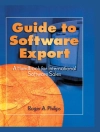Expert Oracle Exadata, 2nd Edition opens up the internals of Oracle’s Exadata platform so that you can fully benefit from the most performant and scalable database hardware appliance capable of running Oracle Database. This edition is fully-updated to cover Exadata 5-2 and Oracle Database 12c. If you’re new to Exadata, you’ll soon learn that it embodies a change in how you think about and manage relational databases. A key part of that change lies in the concept of offloading SQL processing to the storage layer. In addition there is Oracle’s engineering effort in creating a powerful platform for both consolidation and transaction processing. The resulting value proposition in the form of Exadata has truly been a game-changer.
Expert Oracle Exadata, 2nd Edition provides a look at the internals and how the combination of hardware and software that comprise Exadata actually work. Authors include Martin Bach, Andy Colvin, and Frits Hoogland, with contributions from Karl Arao, and built on the foundation laid by Kerry Osborne, Randy Johnson, and Tanel Poder in the first edition. They share their real-world experience gained through a great many Exadata implementations, possibly more than any other group of experts today. Always their goal is toward helping you advance your career through success with Exadata in your own environment. This book is intended for readers who want to understand what makes the platform tick and for whom—’how‘ it does what it is
does is as important as what it does. By being exposed to the features that are unique to Exadata, you will gain an understanding of the mechanics that will allow you to fully benefit from the advantages that the platform provides.
This book changes how you think about managing SQL performance and processing. It provides a roadmap to successful Exadata implementation. And it removes the ‚black box‘ mystique. You’ll learn how Exadata actually works and be better able to manage your Exadata engineered systems in support of your business.
This book:
- Changes the way you think about managing SQL performance and processing
- Provides a roadmap to successful Exadata implementation
- Removes the ‚black box‘ mystique, showing how Exadata actually works
Inhaltsverzeichnis
What Is Exadata?.- Offloading / Smart Scan.- Hybrid Columnar Compression.- Storage Indexes.- Exadata Smart Flash Cache.- Exadata Parallel Operations.- Resource Management.- Configuring Exadata.- Recovering Exadata.- Exadata Wait Events.- Understanding Exadata Performance Metrics.- Monitoring Exadata Performance.- Migrating to Exadata.- Storage Layout.- Compute Node Layout.- Unlearning Some Things We Thought We Knew.- Patching-. Appendix A: CELLCL and DCLI.- Appendix B: Online Exadata Resources-. Appendix C: Diagnostic Scripts-. Appendix D: Exachk.
Über den Autor
Randy Johnson is a principal consultant at Enkitec, a consulting firm specializing in Oracle. Randy has more than 18 years of experience with Oracle, beginning with Oracle 7 during the early 1990s. Much of his career has combined Oracle database administration with Unix administration duties. Over the last five years, Randy focused almost exclusively on real application clusters and automatic storage management. He is also an authority on Oracle backup and recovery via RMAN, having written a popular utility for automating RMAN scripts called Dixie. Randy occasionally blogs at http://blog.enkitec.com.












